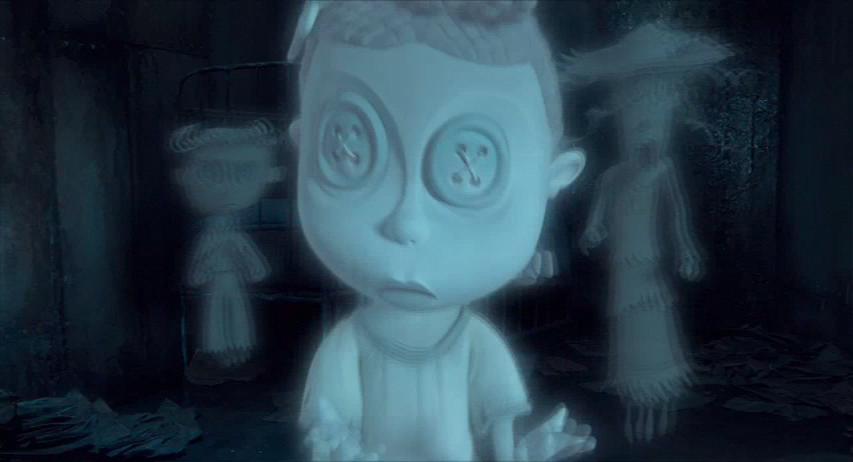"What astonishes me is how much I love the use of 3-D in 'Life of Pi.' I've never seen the medium better employed, not even in 'Avatar,' and although I continue to have doubts about it in general, Lee never uses it for surprises or sensations, but only to deepen the film's sense of places and events.
Let me try to describe one point of view. The camera is placed in the sea, looking up at the lifeboat and beyond it. The surface of the sea is like the enchanted membrane upon which it floats. There is nothing in particular to define it; it is just … there. This is not a shot of a boat floating in the ocean. It is a shot of ocean, boat and sky as one glorious place."
 One of the impressive things I find about the 3D in Life of Pi is that Ebert is wrong when he says that the film never uses it for surprises or sensations. There's a surprising scene where a tiger leaps out from under a tarp that uses it to provide a jump-scare. There are several scenes where Pi is shoving a stick in your face. There's one within the first minute of the film where a humming bird floats in front of the screen, ludicrously far into the audience, as if to shout, "See this movie here? The art film you're watching? Yeah, this is a 3D movie, too! Surprise!"
One of the impressive things I find about the 3D in Life of Pi is that Ebert is wrong when he says that the film never uses it for surprises or sensations. There's a surprising scene where a tiger leaps out from under a tarp that uses it to provide a jump-scare. There are several scenes where Pi is shoving a stick in your face. There's one within the first minute of the film where a humming bird floats in front of the screen, ludicrously far into the audience, as if to shout, "See this movie here? The art film you're watching? Yeah, this is a 3D movie, too! Surprise!"Yet despite how often and thoroughly this film can be enjoyed as a gimmicky 3D movie, that's neither the primary draw, nor is it employed in such a way that it's distracting. The tiger jump-scares you because it's appropriate for the tiger to feel threatening. The hummingbird flies in front of the screen because it's using nature to enchant you. The sticks protrude from the screen because they're threatening a tiger, and by sticking uncomfortably into the screen their threat is believable, and therefore the stick is ironically calming. This is why Ebert didn't notice the surprises and sensations. There are ways to use them to enhance a film or story, and Life of Pi hits every single one of them.
 |
| This picture is a red-cyan anaglyph. |
And yet this film still isn't done making 3D beneficial to it! Oddly enough, though, the next scene I like to point to as to how it works is a very empty scene, toward the end when Pi is sitting in a hospital bed. It's a very empty scene, with color composed so that Pi's face is the first thing to draw your attention. With the scene so empty, it may seem like there's nothing there for the 3D to shine through.
Then the scene also slowly zooms in on Pi's face. Toward the end of the scene, it's not noticeably sticking out, but it's just far enough forward that your eyes are incapable of being drawn away from it. It forces you to be captivated with his story. In addition, any time an object protrudes from a scene, the audience will subconsciously believe it is tactile (this is why so many people try to touch objects protruding from a screen when they first see 3D films). This creates pity for the character, by supplanting the idea that, if your hands weren't covered with butter from your popcorn, perhaps you could reach out and physically console poor Pi as his emotions overcome it. It's raw and powerful, and alleviates the moral judgement that you could hypothetically feel when you listen to what he is actually describing.
I've still only scratched the surface on reasons that Life of Pi works so well in 3D. I could go on forever about the 3D in this movie, because Life of Pi is an emotional (and intentionally contradictory) story about man's relationship with God in the face of tragedy, that uses 3D to drive its points home in ways 2D couldn't adequately express. It's a fantastic triumph in how it captures such a complex and previously believed to be unfilmable story. This film is a must see, especially the 3D version.
















